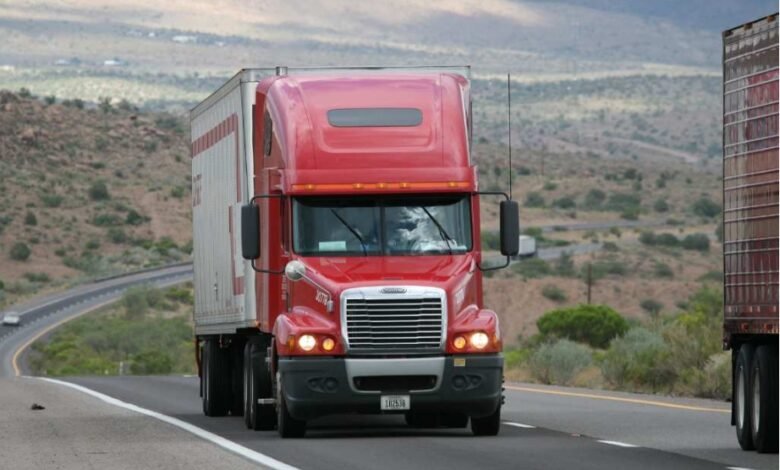Smart Sensors and Their Role in Cold Chain Logistics

In today’s digital world, cold chains play an essential role.
Cold chains are an integral component of modern logistics with commercial racks in Dubai, particularly within the agri-food, pharmaceutical and biomedical sectors. They involve processes aimed at keeping sensitive products at an ideal temperature from production through consumption – any disruption in this chain may lead to economic losses, health risks and degradation in product quality – making smart sensors revolutionary tools capable of revolutionizing cold chain management with their ability to collect, analyze and transmit real time data collection/transmittal/analysis capabilities.
What Is A Smart Sensor ?
A smart sensor is an electronic device that is capable of accurately measuring physical variables (such as temperature, humidity or pressure), properly processing the data captured, and communicating the data via a central database or cloud storage for analysis and reporting.
Smart sensors also use computing, communication, and self-diagnosis capabilities, and typically are found with either wireless communication technology using Bluetooth, Wi, LoRa, or cellular 5G. Smart sensors are becoming ever more popular in many IoT based systems with sensors that can monitor the storage conditions of products and for cold chain management. Therefore, their capabilities allow for better traceability, and speed of response because conditions are being monitored continuously.
Cold Chain logistics present numerous obstacles.
Cold chains must abide by stringent temperature requirements; products must be stored within specified temperature ranges to preserve their integrity; any variation can compromise vaccines between + 2 and 8 deg C, while some frozen goods require temperatures below -18 deg C for proper storage and handling. While such incidents are sometimes difficult to detect without constant monitoring, smart sensors play an essential role here by providing immediate detection and rapid intervention when incidents do occur.
Real-time monitoring and alerts provide real-time coverage.
Smart sensors’ key advantage lies in their real-time monitoring capabilities. Via embedded systems or cloud platforms, temperature and humidity data is instantly accessible to logistics container transport company operators if critical thresholds are breached – with automated SMS, email, or mobile notifications sent if these thresholds are exceeded – enabling swift decision – making such as adjusting temperatures quickly to prevent losses as well as stopping transport immediately if critical thresholds are crossed – this allows rapid decision – making which helps significantly lower risks while increasing service quality compared to traditional monitoring methods.
Traceability and regulatory compliance
Traceability is an industry regulation requirement in many fields. Health authorities enforce stringent standards for the storage and transport of delicate products; smart sensors help meet this standard by collecting temperature, humidity, location and time data automatically throughout logistics processes – this data can then be archived or presented during audits or quality checks; additionally, it strengthens trust between customers and business partners alike.
Logistics Process Optimization.
Smart sensors also play a vital role in optimizing overall supply chain management. By analyzing collected data, companies can identify weak points in their cold chain: poorly insulated storage areas, inaccurately calibrated vehicles or long transport routes – providing companies with insight to adjust processes, lower energy costs and enhance operational efficiency – for instance by detecting periods when temperatures remain stable this can help lower energy consumption of refrigeration systems without impacting product quality.
Integration with information systems
Smart sensors don’t act alone, rather they typically connect to other logistics information systems (WMS, TMS and ERP systems) to create a centralized repository of data for better decision making. By centralizing smart sensor data, the full view of the cold chain can be visualized, analyzed, and acted on in multiple ways such as interactive dashboards, automated reports and predictive analytics through artificial intelligence. Centralized smart sensor data allows logistics managers to more accurately forecast threats, use more strategically calibrate planned interventions, and coordinate team efforts more efficiently. This transformation transforms it into an agile process.
Utilizing cases in the pharmaceutical sector
Pharmaceutical industries are particularly demanding when it comes to managing cold chains. Biological drugs, vaccines, and blood products must all be stored under stringent conditions to remain effective; smart sensors are utilized in warehouses, transport vehicles, individual packaging units and even individual packing bins to monitor each batch in real time; smart sensors tracked COVID-19 vaccine distribution with real time temperature tracking sensors that complied with international standards ensuring safe distribution.
Applications in the Food industry
Freshness is critically important in the food industry-from fruit to vegetables to meats and dairy products, it is important to know the specific temperature range for storage, otherwise bacteria can grow, ruining quality and sensory issues. Smart sensors have the ability to track storage conditions from the field to supermarkets with smart containers often placed into cold rooms or refrigerated display cases that provide retailers with smart tools that can help notify them of product freshness and decrease food waste while increasing consumer satisfaction.
Challenges and limitations related to smart sensors
Smart sensors present many advantages; however, their installation costs can be prohibitively expensive for small businesses. Their effectiveness depends on the quality of communications networks and software; cybersecurity concerns must also be taken into account, as must system compatibility issues, technical maintenance needs and storage concerns for collected data. To overcome such hurdles effectively, tailored solutions must be selected according to each business’s requirements while training teams on their usage.
Future Prospects: towards an autonomous cold chain
Future cold freight chains rely heavily on automation and artificial intelligence. Smart sensors will increasingly become integrated into autonomous systems capable of making decisions without human involvement; for example, refrigerated containers could adjust their temperatures based on environmental data or type of product being transported; predictive algorithms can anticipate breakdowns while optimizing routes and cutting energy costs; ultimately creating smart, autonomous cold chains which promise increased safety, increased efficiency and reduced environmental impact.
